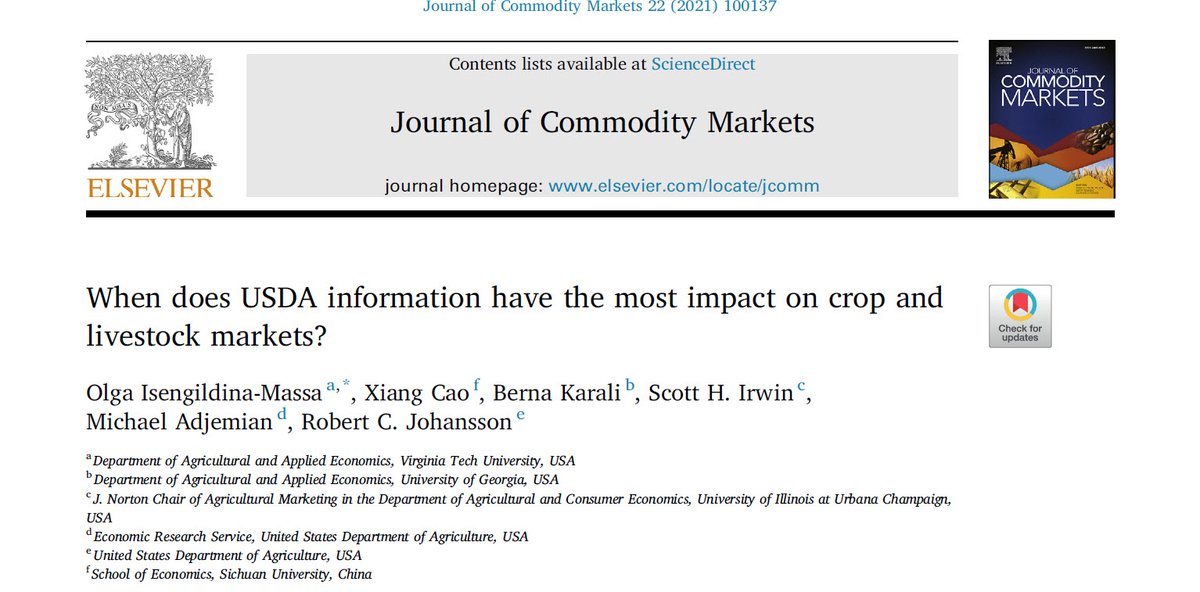
1. Weekend Reading: The Russians are coming. The Russians are coming. The Ru...Oh wait. I meant The Annual Index Rebalancing is coming. The Annual Index Rebalancing is coming. (Have to be a certain age to get the joke) 

2. Now that I have your attention, going to talk about a brand new article in JCOMM about the price impact of index rebalancing in commodity futures markets. Every January this is a major topic of conversation in the markets. sciencedirect.com/science/articl…
3. Background: There is still a lot of money invested in commodity futures markets that is tied to indexes, like the GSCI. Massive passives and all that. Once a year the GSCI revises the weights applied to the commodity futures included in the index.
4. Investments that track the GSCI have to "rebalance" their futures positions in order to match the new weights for the index. This rebalancing for the GSCI takes place on the 5th through the 9th business day every January. Coming soon for 2022.
5. The flows into and out of the 24 commodity futures markets included in the GSCI can be very large indeed. This chart shows our rough estimate of the size of rebalancing money flows in WTI crude oil for 2008-2015. As big as $6 billion. 

6. We test a strategy that assigns an equal weight to each commodity and holds a long (short) position in commodities that experience positive (negative) index weight changes yields. Just an event study of long-short returns around rebalancing for the GSCI.
7. Money chart. Shows the cumulative abnormal return (CAR) to the long-short strategy for 10 days before rebalancing, 5 days of rebalancing, and 10 days after rebalancing. Window around rebalancing to account for front running and lags in response. 

8. We find that the average price impact of rebalancing reaches a peak of 72 basis points in the middle of the week following the rebalancing period, but the impact is temporary as it declines to near zero within the last week of the event window. 

9. Practical meaning: GSCI index rebalancing pushes commodity futures prices up/down an average of 72 basis points. Statistically significant too. For $80 crude this is 60 cents per bbl. Is that economically significant? Hard to tell since the impact is so fleeting.
10. My personal take is that the rebalancing price impact is the sort of thing that matters to traders in commodity futures markets in the short-term but is too small and fleeting to be of any policy concern. Lots more detail in the article sciencedirect.com/science/articl…
@threadreaderapp unroll
• • •
Missing some Tweet in this thread? You can try to
force a refresh









